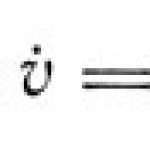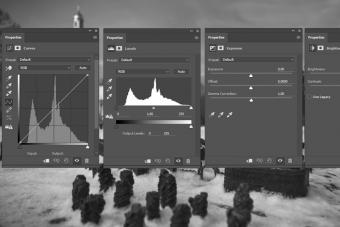The rib has bony and cartilaginous parts. Twelve pairs of ribs are conditionally divided into two groups: I-VII pairs - true ribs (costae verae), fused with the sternum, VIII-XII ribs - false (costae spuriae). The anterior ends of the false ribs are secured by cartilage or soft tissues. XI-XII fluctuating ribs (costae fluctuantes) with their front ends lie freely in the soft tissues of the abdominal wall. Each rib has the shape of a spiral plate. The more curvature of the rib, the more mobile the chest. The curvature of the ribs depends on gender, age. The posterior end of the rib is represented by a head (capitulum costae) with an articular platform divided by a scallop (crista costalis medialis). I, XI, XII ribs do not have a comb, since the head of the rib enters the full fossa of the corresponding vertebra. Anterior to the head of the rib begins its neck (collum costae). On the back surface near the neck of the rib is a tubercle (tuberculum costae) with an articular platform. Closer to the anterior end of the rib, 6-7 cm away from the costal tubercle, there is an angle (angulus costae), from which a groove (sulcus costae) runs along the lower edge of the rib (Fig. 43).
The first ribs have a structural feature: upper and lower surfaces, outer and inner edges.
The ribs are arranged in such a way that the upper edge is facing the chest cavity, and the outer surface is up. They have no costal grooves. On the upper surface of the ribs there is a scalene tubercle, in front of which there is a groove - the place where the subclavian vein fits, behind it - a groove for the subclavian artery.
Development. The ribs are laid along with the vertebrae. The rudiments of the ribs along the myosepts (intermuscular septa) extend to the periphery. They reach significant development in the thoracic region of the body; in other parts of the spine, the costal rudiments are rudimentary. In the cartilaginous rib in the area of the angle on the 2nd month, a bone nucleus appears, which increases towards the neck and head, as well as its anterior end. In the prepubertal period, additional ossification nuclei appear in the heads and tubercles of the ribs, which synostose with the ribs by the age of 20-22.
anomalies. Additional ribs are found in the cervical and lumbar sections of the spine, which is an atavism of development (Fig. 44). Many mammals have more ribs than humans.

Rib radiographs
X-rays of the ribs make overview and sighting. On a survey radiograph in the anterior projection, even in an adult, it is possible to obtain an image of all the ribs of the chest or half of it. By the position of the heart and the aortic arch, it is easy to determine the right and left halves of the chest. In the anterior projection, the posterior ends of the ribs are clearly visible, connected by joints with the vertebrae, oriented downward and laterally. The head, neck and tubercles of the rib are superimposed on the shadow of the vertebral body and transverse processes. The edges of the ribs and their contours are even, somewhat more compact than the middle, with the exception of the posterior part of the VI-IX ribs, where the lower contour is convex and wavy. In the picture in the anterior projection, more distinct contours of the anterior ends of the ribs are visible, in the posterior projection - of the posterior ends. In a side shot, in side projection, there is usually a clear image of the ribs facing the film. In this projection, the body of the rib is better visible, the image of which is distorted in the image in the rear or front projection. The electroroentgenogram of the chest makes it possible to obtain clearer contours of the ribs.
It is difficult to determine the area, projection and number of ribs on an aiming image. In this case, the area to be photographed is indicated by a contrast mark.
On the radiograph in children, a bone substance is observed in the body of the rib. Bone points in the heads and tubercles are detected after 15-20 years. They fuse with the bone body of the rib by the age of 20-25.
Among all chest injuries known in medicine, rib fractures are the most common in practice. Among all fractures, the frequency of such an injury is 10-15%. The most important aspect of this type of fracture is the high probability of damage to internal organs. In some cases, such a development of events can be fatal, so the importance of the issue of rib fractures is very high.
A rib fracture is a violation of the integrity of the bony or cartilaginous part of a rib or group of ribs. Damage to one or two ribs in most cases does not require immobilization and hospitalization. If a large number of ribs are damaged, and it is complicated by damage to the chest organs, it is necessary to carry out treatment under the supervision of a doctor in a hospital.
Chest Anatomy
The chest includes 12 thoracic vertebrae, to which, with the help of joints, 12 pairs of ribs are attached. In front, the cartilaginous parts of the ribs adjoin the sternum.
All edges are divided into three groups: true - include 1-7 pairs, false - are represented by 8-10 pairs and oscillating - 11-12 pairs. The true ribs adjoin the sternum with the help of their own cartilaginous parts. False ribs lack their own direct connection to the sternum. The cartilaginous endings grow together with the cartilage of the ribs, which are located above. The oscillating ribs do not articulate with anything at all with their cartilaginous parts.
All ribs have bony and cartilaginous parts. In the anatomical structure of the rib, a tubercle, body, neck and head are distinguished. On the inner surface of the thigh there is a groove in which the neurovascular bundle is located. In the case of a rib fracture, very often, this bundle is damaged, which leads to disruption of the trophism of the intercostal muscles and bleeding.

Etiology of the disease
In most cases, the cause of a rib fracture is chest compression, a blow to it, or a fall of the chest on a hard protruding object. Also, such damage can develop against the background of the course of other diseases in the body: osteomyelitis, osteoporosis, tumors. In such cases, the fracture is called pathological.
Classification of rib fractures
|
By the presence of damage to the integrity of the skin |
Open fracture - there is damage to the skin Closed fracture - no skin damage |
|
By degree of damage |
|
|
Location |
Bilateral fracture - the ribs are damaged on both sides. May be accompanied by respiratory failure Fenestrated fracture - the ribs are damaged in several places, but on one side of the chest |
|
According to the number of fractures |
Multiple - fracture of several ribs Single - fracture of one rib |
|
By the presence of displacement of fragments |
No offset Offset |

Mechanism of injury
Most often, the rib breaks in the zone of greatest bend, namely along the axillary line on the lateral surface of the chest. The most common fractures are 5-8 ribs, the most rare are fractures of 9-12 ribs. This is due to the fact that these pairs of ribs have the greatest mobility, especially in the distal part.
With a fracture of the ribs in the back of the arch, the symptoms appear blurry. This feature is associated with a small mobility of bone fragments during breathing in this particular part. Rib fractures in the anterior and lateral costal arch have very pronounced symptoms and are the most difficult to tolerate. It is worth considering the three most common, depending on the mechanism of injury, fracture.
|
Indentation of a broken rib If a large area of the chest is subjected to strong pressure, then there may be an indentation of a fragment of the rib or ribs into the chest. During this process, the vessels, pleura, lung, nerves are injured. Fractures of this type are called fenestrated. When a large area is injured, including several ribs, a large mobile area may appear located in the chest wall. This area is called a costal valve. |
|
Complete rib fracture Most often occurs when falling on the chest. During the fracture, a fragment appears, which moves at the time of the implementation of motor movements. Quite often there is damage to the nerves, intercostal vessels, lung, pleura. |
|
Fracture of a limited section of the arch of the rib Appears when injured by a heavy angular object. Damage occurs at the site of direct traumatic impact. The fracture rushes inward. First, the inner part of the rib is damaged, and then the outer part. |
Clinical picture
Rib fracture symptoms:
Pain - appears in the fracture area, increases with inhalation and exhalation, movements, coughing. To reduce pain, rest is necessary, you can take a sitting position.
Shallow breathing, as well as lagging behind the injured side of the chest in breathing.
Swelling of tissues located in the area of damage.
The appearance of a hematoma at the fracture site develops with a traumatic fracture, which appeared as a result of direct mechanical impact.
A crunch or sound of rubbing bones at the time of injury is typical for multiple fractures of one rib without displacement of parts of the damaged bone or for fractures that lead to the appearance of a large number of fragments.

With complicated and multiple fractures, the following symptoms may appear:
Hemoptysis - in the process of coughing, blood is released from the respiratory tract. This indicates the presence of lung damage.
Subcutaneous emphysema - in the presence of damage to the lung, air gradually begins to penetrate under the skin.
Complications
Pneumothorax - penetration into the pleural cavity of air. Without timely treatment, the process can turn into a tension pneumothorax, which increases the risk of cardiac arrest.

Hemothorax - penetration into the pleural cavity of the blood. There is compression of the lung, difficulty breathing, shortness of breath. With progression, it turns into respiratory failure.
Respiratory failure is a process in which shallow breathing is observed, the pulse quickens, cyanosis and pallor of the skin appear. In the process of breathing, the asymmetry of the chest and the retraction of individual sections are visually determined.
Pleuropulmonary shock - develops with pneumothorax and the presence of a large wound area. This leads to a large amount of air entering the pleura. The rate of shock development increases if the air is cold. It manifests itself as respiratory failure, with cold extremities and a painful cough.
Pneumonia. Often there is inflammation of the lung with damage to the lung tissue, the inability to perform normal motor movements, low motor activity.
Rib fracture healing stages
The first stage is connective tissue callus. At the point of damage, blood begins to accumulate, and with its current, cells migrate there that produce connective tissue (fibroblasts).
The second stage is osteoid callus. In the connective tissue callus, deposits of mineral salts and inorganic substances accumulate and osteoid is formed.
The third stage - the strength of the callus increases due to the deposition of hydroxyapatites in the osteoid. Initially, the callus remains loose and exceeds the diameter of the rib in size, but eventually reaches normal size.

Diagnosis of the disease
Inspection and data collection. When probing (palpation) of the area of injury, you can detect a deformity similar to a step and feel crepitus of bone fragments.
Interrupted breath symptom - a deep breath is interrupted due to pain.
Symptom of axial load - when squeezing the chest itself in different planes, pain does not appear in the area of pressure, but at the site of the fracture.
Payr's symptom - when tilted to the healthy side, pain is felt in the area of \u200b\u200bthe fracture itself.
X-ray examination is the most accurate and most common diagnostic method.

First aid for a broken rib
Self-medication with such an injury is categorically contraindicated, and the use of compresses, herbs, ointments can only lead to an aggravation of the situation. If the victim is in serious condition, he has shortness of breath, weakness, there is an open fracture, you must immediately call an ambulance. You can also help him sit up if he feels better in a sitting position. If there is a suspicion of a closed fracture of the rib, you can apply ice, take painkillers, apply a tight bandage on the chest, but then be sure to contact the traumatology.

Treatment
The main method of treatment for uncomplicated rib fracture is immobilization and anesthesia.
In a hospital, an alcohol-procaine blockade is carried out.
Procaine and 1 ml of ethyl alcohol 70% are injected into the projection of the fracture.
The chest is fixed with an elastic bandage.
In the presence of respiratory failure, oxygen inhalations are used.
With extensive hemothorax and pneumothorax, a puncture of the pleural cavity is performed, thereby removing blood or air.
If a hemothorax is present with a small amount of blood, the puncture is not performed, the blood is absorbed by the body on its own.
The treatment time for a rib fracture is on average 3-4 weeks.
Clinical case
Patient N. was admitted to the traumatology department with complaints of shortness of breath, chest pain on the right side, and weakness. From the anamnesis: During icy conditions, he slipped and fell, while hitting a large stone with his chest.
On examination: On the right side of the skin along the axillary line in the area of 5-8 ribs, there is a bruise and swelling of the soft tissues of a small size. The skin is pale. Palpation revealed crepitus and tenderness in the area of 6-7 ribs. The pulse is 88 beats per minute, shallow breathing, shortness of breath - up to 20 respiratory movements per minute. Examination revealed a fracture of the 6th and 7th ribs on the right and a right-sided hemothorax.
Treatment: Immobilization of the chest, relief of pain, infusion therapy, puncture of the pleural cavity (removal of 80 ml of blood), oxygen inhalation.
The ribs are two flat bones that look like arcs. They start in the region of the spine, then go to the sternum, where they become part of the human chest. Each of us has twenty-four ribs. The upper seven pieces intersect frontally with the sternum, which is why they were called true ribs. The seventh, ninth and tenth ribs with the help of cartilage are combined with the same zone of the rib, located a little higher. In this regard, they received the name of false ribs. The eleventh and twelfth ribs have their ends deep in the muscles of the peritoneum, while the front ends do not dock to anything. These edges are called oscillating. There are unique ones who do not have an eleventh or even a twelfth pair of ribs, while others may also have a thirteenth pair of so-called free ribs. For the most part, men have larger free ribs than women.
The ribs look like plates with slight curvature. They enter the long spongy bone with the help of their long posterior zone. And the frontal zone consists of a small cartilaginous region. All bony ribs can be divided into posterior and frontal endings. Between them there is a rib body. The posterior end has a slight thickening, called the costal head. The costal head consists of an articular wall, which is divided by a comb. It allows you to combine them with vertebral bodies. At the first and twelfth, as well as the eleventh ribs, the articular wall does not have such a separator as a scallop. Just behind the head is the neck of the rib. This is a slightly narrower part. At its upper border there is a longitudinal scallop. You will not see a scallop at the first and last ribs. Where the neck transforms into the body is the costal tubercle, which is equipped with an articular wall used to join with the articular wall at the transverse process of the vertebrae. There is no tubercle on the eleventh and twelfth ribs, because these ribs do not participate in the union with the processes belonging to the last vertebrae of the sternum. Leaving to the side of the costal tubercle, the ribs change their bend. It is in this part that the body of the rib is equipped with a costal angle. At the first rib, the angle is in the same place as the tubercle, while the remaining ribs offer a small distance between these two parts, and gradually it is able to increase. The twelfth rib has no angle at all. The inner side of the middle ribs along their lower edge has a groove, inside it the vessels of the intercostal space move. At the top of this side of the first rib there is a small tubercle to which the frontal scalene muscle joins. Behind him, at the same time, a groove was located, which is considered the home of the subclavian artery. In front of the tubercle there is another groove, inside which lies the subclavian vein.
Seven true ribs with the help of cartilaginous parts, symphyses or even flat joints are combined with the sternum. The cartilage belonging to the first rib connects to the sternum, thereby forming synchondrosis. In front and behind the joints are fixed by radiant ligaments, on the front side of the sternum, together with the periosteum, they form a dense shell. All false ribs intersect with the frontal end of their own cartilage, as well as with the lower border of the cartilage, which lies slightly higher. They do this due to a dense connective tissue fusion called syndesmosis.
Man is inquisitive by nature. Most people are just interested in learning something new, replenishing their brain with interesting information. Particularly entertaining can be problematic theories, which are often the cause of controversy. For example, how many ribs a man and a woman have.
Origins of the question
A normal person, at first glance, should not have such questions. Since, having thoroughly studied the entire school textbook of human anatomy, everyone will understand that there are no differences between men and women in the skeleton. However, after talking with religious fanatics and participating in various kinds of disputes, even an educated person may have a thought: is this true, is there an equal number of ribs in men and women?

From the bible
Everyone knows the approximate story of Adam and Eve. God created the Earth and decided to populate such a beautiful planet with living beings. He first created man, Adam. But when he saw how he was bored alone, he decided to create a couple for him - a woman who would brighten up Adam's loneliness. Since the human building material was almost over, God had to borrow one rib from Adam and create the opposite sex from it. Not knowing how to console the poor man, the Creator made the lady very beautiful, for which Adam was grateful and did not take offense for what he had done. This is the source of the question of how many ribs a man and a woman have. After all, believers (and, of course, uneducated people) will assure that men have fewer ribs than women. By the way, this is also written in the Koran, so Muslims also believe in this fact.
Where is the truth?
You can figure out how many ribs a man and a woman have using the usual anatomy textbook that children study at school. It clearly says that the representative of Homo Sapiens, i.e. human, there are 24 ribs, i.e. 12 pairs of ribs. This was known as early as the 16th century, when Andrei Vesalius, the father of modern anatomy, made several autopsies of individuals of different sexes and announced how many ribs a man and a woman had - 12 pairs.

Adam's rib syndrome
But there are also exceptions to the rule. And sometimes a person can count a few more ribs than they should be. But this, however, does not depend on gender. Statistics show that a similar phenomenon is more often observed in women, although men also have a thirteenth rib. A similar fact in medicine is called "Adam's rib syndrome". The fact is, without a clearly defined skeleton: the child has a set of cartilage tissue, which eventually hardens, fuses and forms the skeleton of an adult. But all processes in the body of each person are individual, so it happens that one or two extra ribs remain, and living with them is not so easy. Extra processes often interfere, put pressure on the organs, causing numbness in the tissues of the hands, as well as improper functioning of some internal organs. Therefore, people with Adam's rib syndrome are often recommended to have surgery to remove them in order to avoid negative consequences from the bones that cause discomfort. And only having a standard set (12 pairs of ribs) available, every person, regardless of gender, can feel confident and healthy. So, when answering the question of how many ribs a woman or a man has, you just need to be firmly convinced that you are right and not even doubt such a fact.
Ribs
The rib has bony and cartilaginous parts. Twelve pairs of ribs are conditionally divided into two groups: I-VII pairs - true ribs (costae verae), fused with the sternum, VIII-XII ribs - false (costae spuriae). The anterior ends of the false ribs are secured by cartilage or soft tissues. XI-XII fluctuating ribs (costae fluctuantes) with their front ends lie freely in the soft tissues of the abdominal wall. Each rib has the shape of a spiral plate. The more curvature of the rib, the more mobile the chest. The curvature of the ribs depends on gender, age. The posterior end of the rib is represented by a head (capitulum costae) with an articular platform divided by a scallop (crista costalis medialis). I, XI, XII ribs do not have a comb, since the head of the rib enters the full fossa of the corresponding vertebra. Anterior to the head of the rib begins its neck (collum costae). On the back surface near the neck of the rib is a tubercle (tuberculum costae) with an articular platform. Closer to the anterior end of the rib, 6-7 cm away from the costal tubercle, there is an angle (angulus costae), from which a groove (sulcus costae) runs along the lower edge of the rib (Fig. 43).
The first ribs have a structural feature: upper and lower surfaces, outer and inner edges.
The ribs are arranged in such a way that the upper edge is facing the chest cavity, and the outer surface is up. They have no costal grooves. On the upper surface of the ribs there is a scalene tubercle, in front of which there is a groove - the place where the subclavian vein fits, behind it - a groove for the subclavian artery.
Development. The ribs are laid along with the vertebrae. The rudiments of the ribs along the myosepts (intermuscular septa) extend to the periphery. They reach significant development in the thoracic region of the body; in other parts of the spine, the costal rudiments are rudimentary. In the cartilaginous rib in the area of the angle on the 2nd month, a bone nucleus appears, which increases towards the neck and head, as well as its anterior end. In the prepubertal period, additional ossification nuclei appear in the heads and tubercles of the ribs, which synostose with the ribs by the age of 20-22.
anomalies. Additional ribs are found in the cervical and lumbar sections of the spine, which is an atavism of development (Fig. 44). Many mammals have more ribs than humans.

Rib radiographs
X-rays of the ribs make overview and sighting. On a survey radiograph in the anterior projection, even in an adult, it is possible to obtain an image of all the ribs of the chest or half of it. By the position of the heart and the aortic arch, it is easy to determine the right and left halves of the chest. In the anterior projection, the posterior ends of the ribs are clearly visible, connected by joints with the vertebrae, oriented downward and laterally. The head, neck and tubercles of the rib are superimposed on the shadow of the vertebral body and transverse processes. The edges of the ribs and their contours are even, somewhat more compact than the middle, with the exception of the posterior part of the VI-IX ribs, where the lower contour is convex and wavy. In the picture in the anterior projection, more distinct contours of the anterior ends of the ribs are visible, in the posterior projection - of the posterior ends. In a side shot, in side projection, there is usually a clear image of the ribs facing the film. In this projection, the body of the rib is better visible, the image of which is distorted in the image in the rear or front projection. The electroroentgenogram of the chest makes it possible to obtain clearer contours of the ribs.





